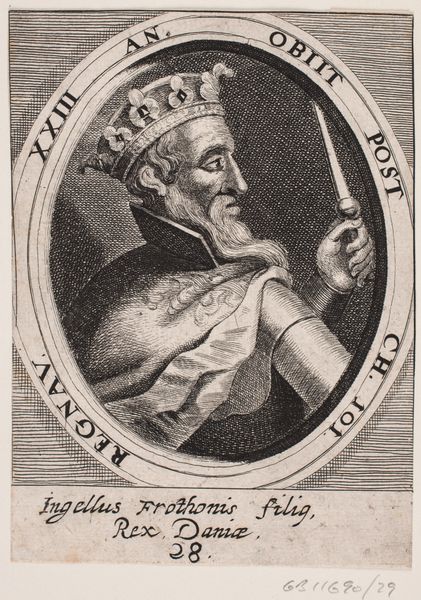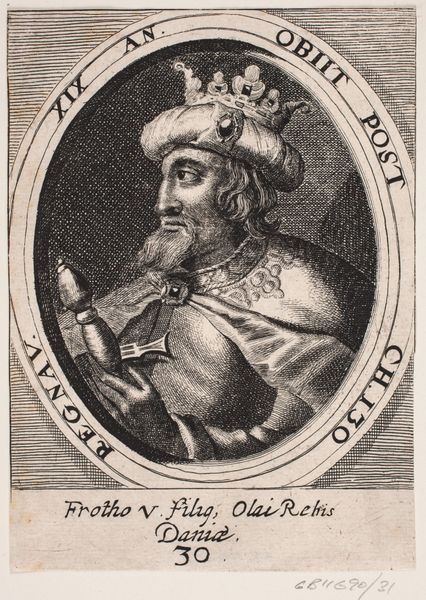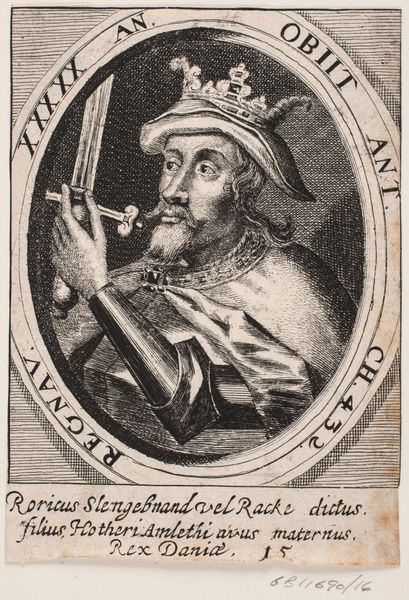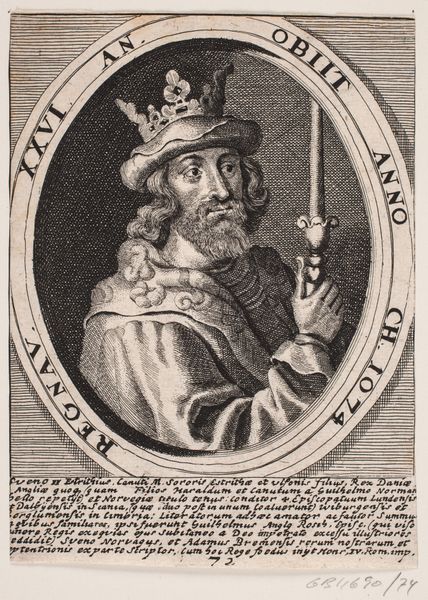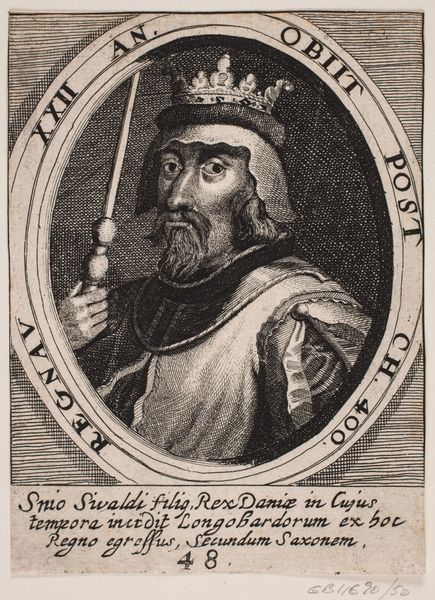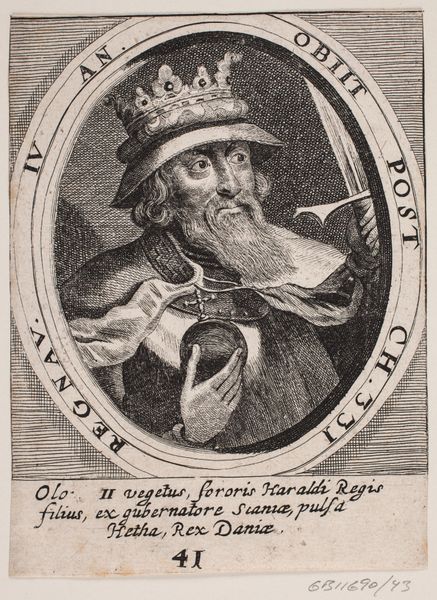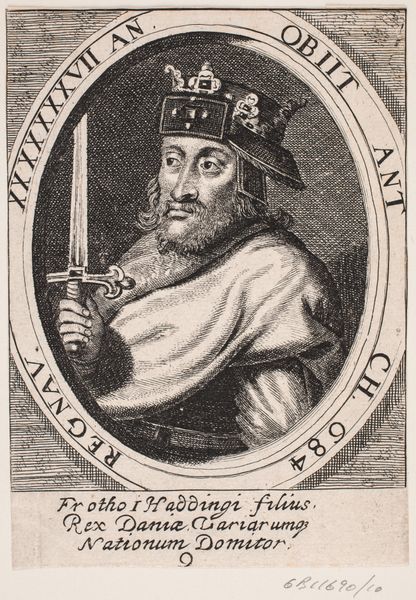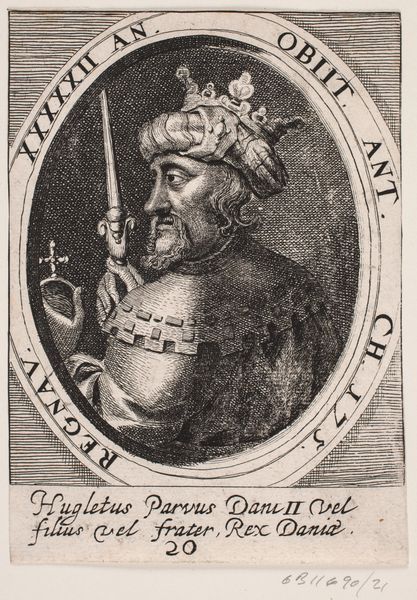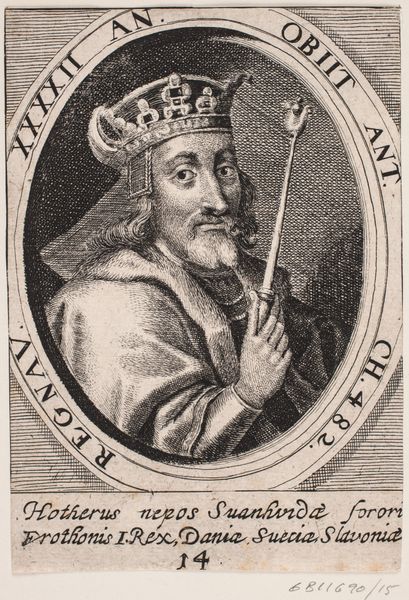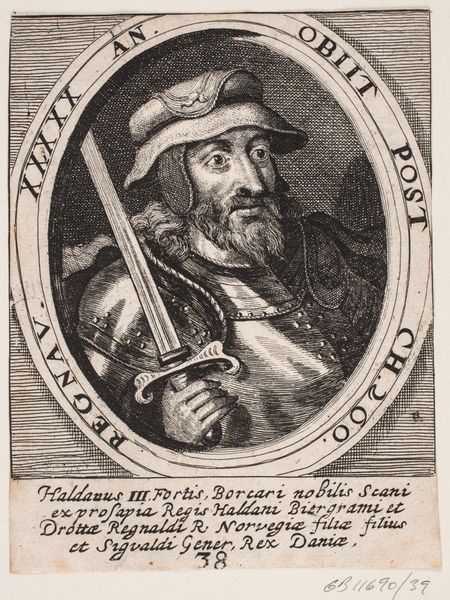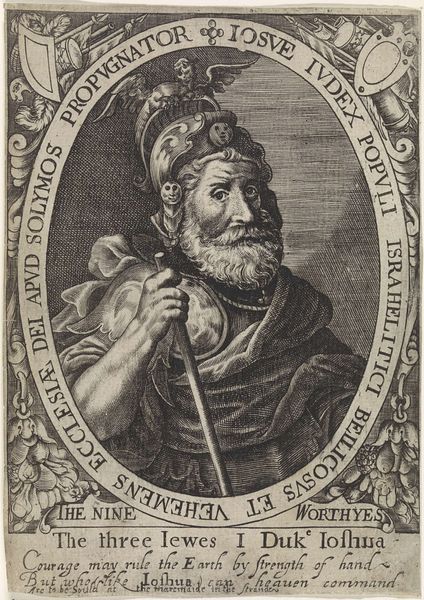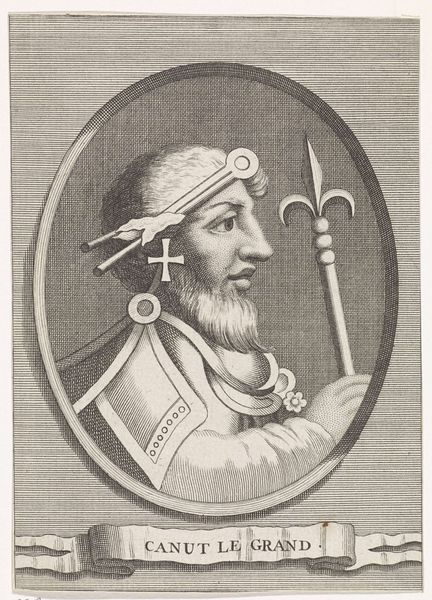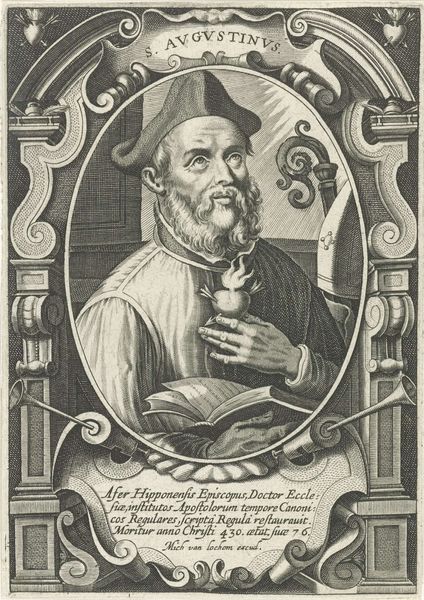
drawing, print, engraving
#
portrait
#
drawing
#
baroque
# print
#
history-painting
#
engraving
Dimensions: 140 mm (height) x 100 mm (width) (bladmaal)
Curator: So, here we have an engraving titled "Fridlev den Rappe" dating back to 1646. This piece, housed at the SMK in Copenhagen, presents us with a portrait within an oval frame. It seems to want to present something about Danish history. Editor: Right away, I get a feeling of solemnity from this portrait. There's a sternness in the subject's expression, a quiet intensity in the detail work of the lines that carve out his features. It's interesting that an anonymous artist captured this image; does this anonymity allow greater focus on Fridlev and what he stood for, less distraction about who captured him? Curator: Precisely. Engravings like this one served to memorialize historical figures. What fascinates me are the attributes that come along with that choice – his cloak, sword, and the crown-like turban. Consider the cultural weight such images bore: connecting Fridlev, or Fridlevus as the inscription notes in Latin, with a certain understanding of power and legacy, spanning Dania, Britannia and Hibernia. These aren't simple drawings but curated stories of a reign and a heritage. Editor: It makes you wonder about the choice to depict him in profile too, doesn’t it? There is a classic and authoritative visual quality that reinforces those notions of rulership and succession you mention. The way the artist uses simple cross-hatching, just really detailed in specific spots, makes it feel very accessible, less about divine right, and more a human endeavor, if that makes sense? Like, power is portrayed, but it feels more earned than ordained, you know? Curator: I understand. The portrait is also enclosed by lettering, it emphasizes time and reign: "XXXVII AN. REGNAV", marking the length of his reign and, conversely, "OBIIT AN. CH. 30", notes the year of his passing, rooting his narrative in the timeline. Such detail underscores the print's intention, a pedagogical and memorial tool, a tangible means of cultural continuity. Editor: A continuity created by an artist in very thoughtful way, using pretty economic strokes to deliver an understanding of time, place, and power, which now echoes for us through the centuries. It is also simply very appealing! Curator: Absolutely. An eloquent summary. This glimpse into history offers insights into how we construct and perpetuate our cultural memories. Editor: It prompts one to wonder, who might we engrave today? What story of power would *we* tell?
Comments
No comments
Be the first to comment and join the conversation on the ultimate creative platform.
